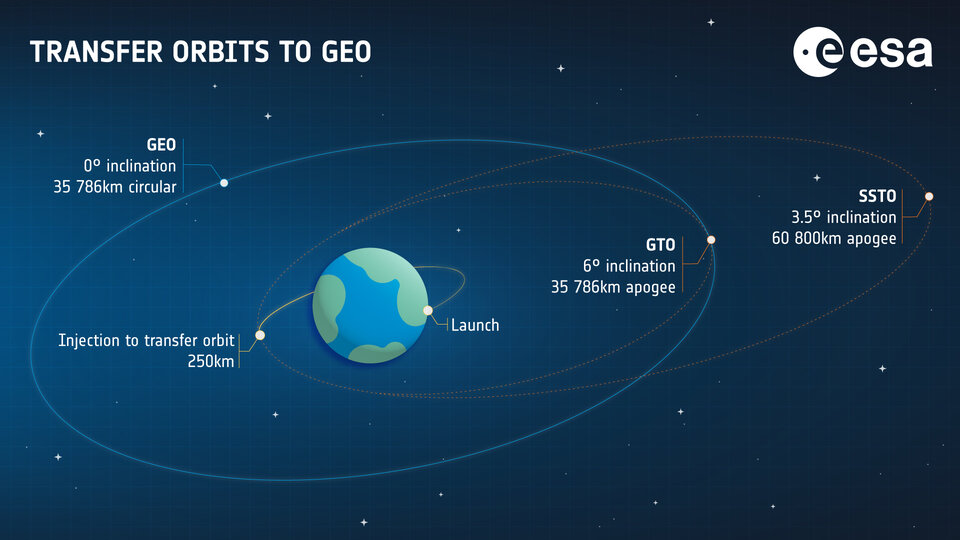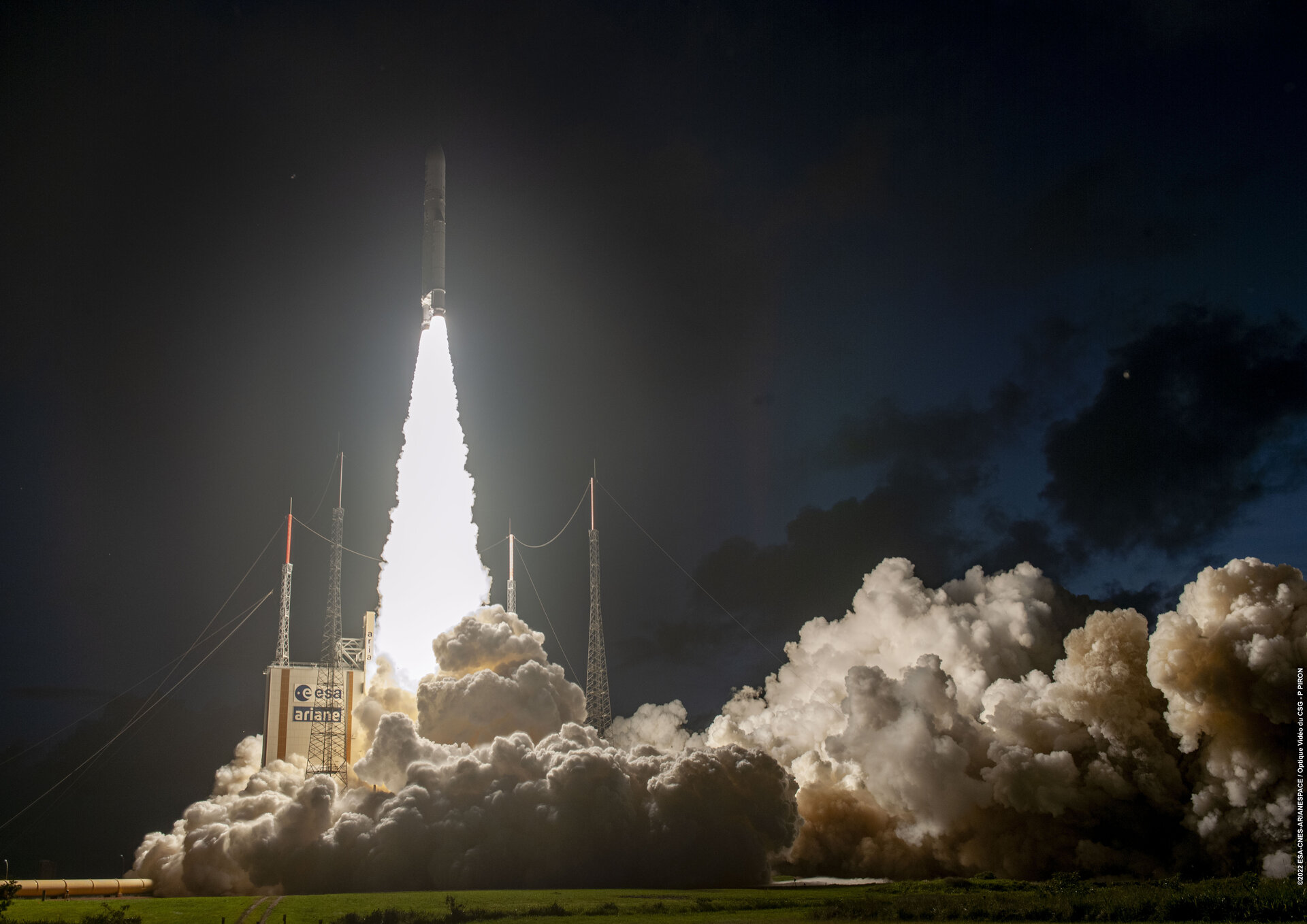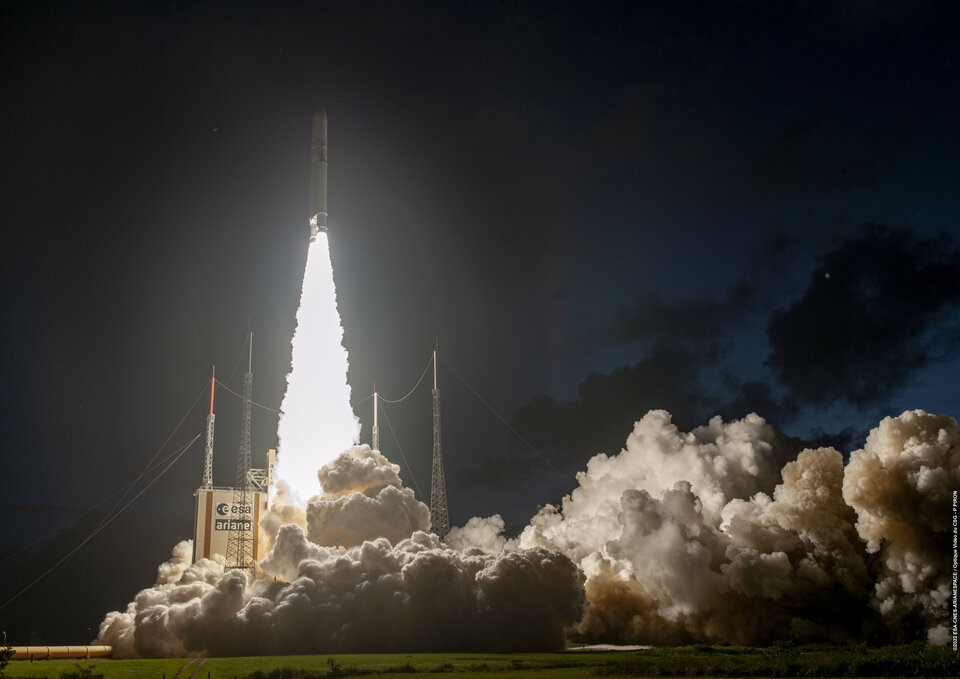Ariane 5: payload and geography open super-efficient path to GEO
Ariane 5’s 7 September 2022 launch made headlines for orbiting Europe’s tallest-ever telecommunications satellite, but the VA258 mission also stands out for its trajectory – one of the most extreme examples yet flown of a super-efficient path to geostationary (GEO) orbit.
By delivering its payload to a highly elliptical orbit with a very high maximum altitude – 60 800 km – and inclination from the equator of just 3.5°, Ariane 5 left Eutelsat’s Konnect VHTS spacecraft with relatively little work to do to reach its operational orbit: a circular path directly over the equator at nearly 36 000 km.
Telecommunications satellites fly at GEO because at that altitude they take 24 hours to orbit. From the perspective of ground antennae that send and receive signals, they are stationary in the sky.
Reaching GEO is a two-step journey. Ariane 5 typically launches satellites like Konnect VHTS into a geostationary transfer orbit, or GTO – an elliptical path with its highest point, or apogee, at the GEO altitude and an inclination from the equator of about 6°. From there, a satellite uses its own thrusters, and fuel, to gradually circularise its orbit and reduce its inclination to 0°.
But the so-called supersynchronous transfer orbit (SSTO) chosen for VA258 is a more efficient starting point.
Daniel de Chambure, head of ESA’s Kourou office at Europe’s Spaceport in French Guiana, explains that a satellite in SSTO takes longer to reach GEO following launch – but burns less of its own fuel to get there.
“Saving that fuel extends the life of the satellite greatly,” says de Chambure.

Two factors made it possible to launch Konnect VHTS to SSTO, despite its great mass of more than 6.5 tonnes.
First, while many missions carry two or more spacecraft to orbit, VA258 was a one-payload flight – with all of Ariane 5’s launch energy available for pushing Konnect VHTS to an unusually high apogee.
Second, Europe’s Spaceport is located very close to the equator – roughly corresponding to the 3.5° inclination chosen for VA258. For a satellite to change the inclination of its orbit takes a great deal of energy, so launching from French Guiana is always an advantage when the goal is to reach the 0° inclination of GEO.
In the case of VA258, Ariane 5 was able to do about half of the work needed to reduce Konnect VHTS's inclination from the 6° typical of a GTO launch. So, Konnect VHTS enjoyed Ariane 5’s natural geographic advantage and an unusually large reserve of energy from its rocket motors.
Arnaud Boutonnet, a mission analyst at ESA's European Space Operations Centre in Darmstadt, Germany, says the efficiency benefit of starting from a high apogee is particularly significant for modern spacecraft like Konnect VHTS, which are equipped with electric thrusters instead of traditional liquid-fuel rockets.
A traditional spacecraft gets a large boost from short burns, at apogee, of its onboard rocket engine. This high thrust means it might take three or four orbits to go from GTO to GEO.
By contrast, says Boutonnet, electric propulsion provides a very small thrust and such a spacecraft might take 100 or so orbits to reach its final GEO orbit. However, he emphasises, in energy it is "very cheap” to correct inclination from a high orbit.
So, a launch to SSTO is a good option when the combination of rocket power, spacecraft mass and launch site geography allow it. In the case of VA258, says Boutonnet, the optimum flight turned out to be to a high apogee, with Ariane 5 and Konnect VHTS each doing about half of the work to bring final inclination to 0°.
The final phase of flight is also noteworthy. After releasing the satellite – at about 1 225 km in the case of VA258 – Ariane 5’s upper stage follows at a safe distance before initiating an “end of life” manoeuvre, emptying its hydrogen and oxygen tanks through the engine and thrusters, and then carrying out a complete tank passivation, to begin a slow descent towards destruction in the atmosphere.
This death spiral takes 10-20 years – but ensures the stage does not become space debris after its mission is complete.
For a more complete guide to types of orbit, click here



